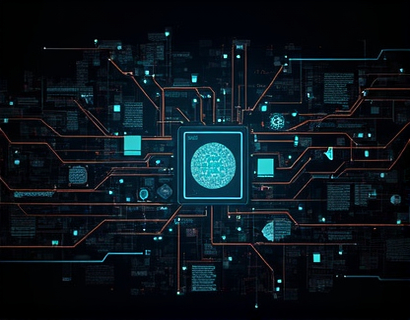Cryptocurrency Security and Privacy: Elite Defense Strategies for HNWIs, Celebrities, and Entrepreneurs in the Digital Age
In the rapidly evolving digital landscape, the security and privacy of digital assets, particularly cryptocurrencies, have become paramount for high-net-worth individuals, celebrities, and entrepreneurs. The cryptocurrency sector, while offering unprecedented opportunities for wealth creation and financial freedom, also presents unique challenges in terms of security and privacy. This article delves into elite defense strategies and operational security measures tailored to protect the digital assets and personal data of those most vulnerable to sophisticated cyber threats.
Understanding the Threat Landscape
The cryptocurrency space is a prime target for cybercriminals due to the high value of assets and the relative anonymity it offers. Hacking, phishing, ransomware, and social engineering are just a few of the tactics employed by malicious actors. For HNWIs, celebrities, and entrepreneurs, the stakes are even higher, as their digital footprints are often more visible and valuable to attackers. Understanding this threat landscape is the first step in implementing effective security measures.
Advanced Authentication Methods
One of the most critical defenses against unauthorized access is robust authentication. Traditional password-based systems are increasingly inadequate. Implementing multi-factor authentication (MFA) adds an extra layer of security, requiring users to provide two or more verification factors to gain access. For cryptocurrency wallets, hardware wallets that require physical keys for transactions offer a higher level of security compared to software wallets. Additionally, biometric authentication methods such as fingerprint or facial recognition can enhance security without compromising convenience.
Secure Wallet Management
Cryptocurrency wallets are the primary entry point for cyberattacks. Using reputable and well-maintained wallet solutions is essential. Hardware wallets, which store private keys offline, are less susceptible to online attacks. For those who prefer online wallets, choosing services with a strong track record of security and transparency is crucial. Regularly updating wallet software and enabling all available security features, such as encryption and remote wipe capabilities, can further mitigate risks.
Privacy-Focused Cryptocurrencies
For those seeking enhanced privacy, privacy-focused cryptocurrencies like Monero, Zcash, and Dash offer advanced features such as ring signatures, zero-knowledge proofs, and confidential transactions. These technologies make it difficult for external observers to trace transactions or link them to specific identities. However, it's important to use these cryptocurrencies responsibly and in compliance with legal requirements to avoid attracting unwanted attention.
Network Security Measures
Securing the network infrastructure is vital for protecting against DDoS attacks and other network-based threats. Implementing a robust firewall, using intrusion detection and prevention systems (IDPS), and regularly monitoring network traffic can help identify and mitigate potential threats. Employing a content delivery network (CDN) can also distribute traffic and reduce the impact of DDoS attacks. For high-value assets, considering a dedicated IP address and a secure, isolated network environment can provide an additional layer of protection.
Data Encryption and Storage
Encrypting sensitive data both in transit and at rest is a fundamental security practice. Using strong encryption protocols such as AES-256 for data at rest and TLS 1.3 for data in transit ensures that even if data is intercepted, it remains unreadable without the proper decryption keys. Storing private keys and other sensitive information in secure, encrypted vaults can prevent unauthorized access. Regularly backing up data to secure, offsite locations is also essential to ensure data integrity and availability.
Operational Security Protocols
Operational security involves the policies and procedures that govern how an organization manages its digital assets and information. For individuals and businesses in the cryptocurrency space, this includes creating and enforcing strict access controls, conducting regular security audits, and providing cybersecurity training for all personnel. Implementing a zero-trust security model, where no user or device is automatically trusted inside or outside the network perimeter, can significantly reduce the risk of insider threats and breaches.
Incident Response Planning
Despite the best security measures, breaches can still occur. Having a well-defined incident response plan is crucial for minimizing damage and restoring operations quickly. This plan should outline the steps to be taken in the event of a security incident, including containment, eradication, recovery, and post-incident analysis. Regularly testing and updating the incident response plan ensures that the organization is prepared to handle various scenarios effectively.
Legal and Compliance Considerations
Navigating the legal landscape of cryptocurrency is complex and varies by jurisdiction. Ensuring compliance with local and international regulations is essential to avoid legal repercussions. This includes adhering to anti-money laundering (AML) and know-your-customer (KYC) requirements, reporting large transactions, and maintaining accurate records. Consulting with legal experts specializing in cryptocurrency can help navigate these requirements and protect against regulatory risks.
Reputation Management and Public Relations
For celebrities and public figures, the potential impact of a security breach extends beyond financial loss to reputational damage. Proactive reputation management and public relations strategies can help mitigate the fallout from a security incident. This includes transparent communication with stakeholders, swift action to address the breach, and ongoing efforts to rebuild trust. Engaging with reputable PR firms that understand the cryptocurrency space can be invaluable in managing public perception.
Continuous Monitoring and Threat Intelligence
Staying ahead of emerging threats requires continuous monitoring and access to threat intelligence. Utilizing security information and event management (SIEM) systems can provide real-time insights into network activity and potential security incidents. Subscribing to threat intelligence feeds and participating in industry forums can help stay informed about the latest attack vectors and best practices. This proactive approach enables timely responses to new threats and enhances overall security posture.
Conclusion
In the digital age, the security and privacy of cryptocurrency assets are critical concerns for HNWIs, celebrities, and entrepreneurs. By implementing advanced authentication methods, secure wallet management, privacy-focused cryptocurrencies, robust network security, data encryption, operational security protocols, incident response planning, legal compliance, reputation management, and continuous monitoring, individuals and businesses can significantly reduce the risk of cyber threats. While no security measure is foolproof, a comprehensive and proactive approach can provide a strong defense against sophisticated cyber attacks, ensuring the safety and integrity of digital assets and personal data.










































